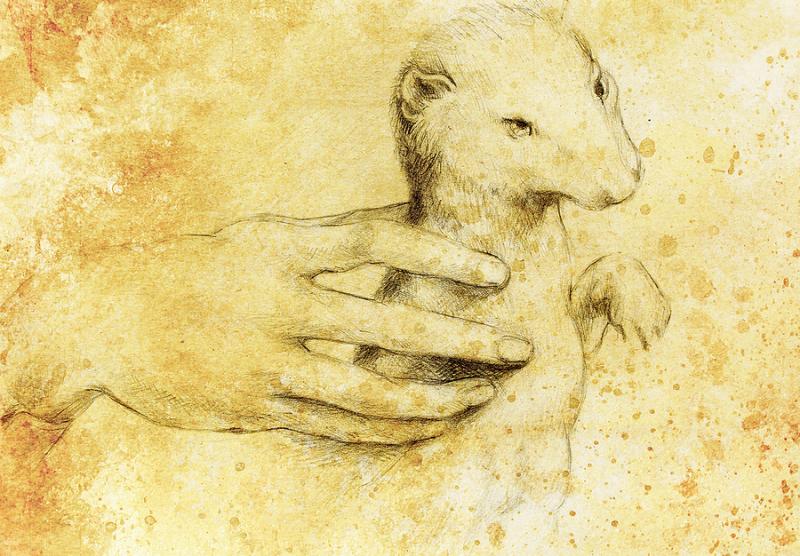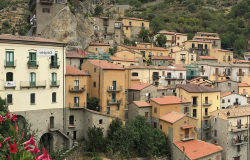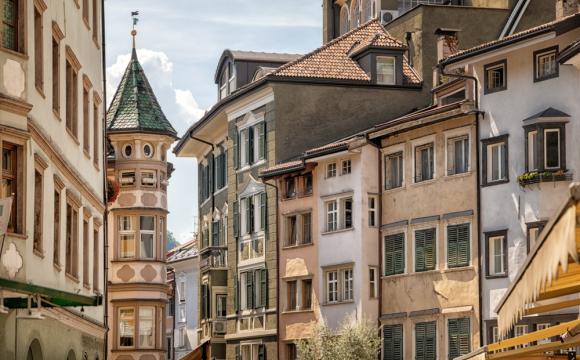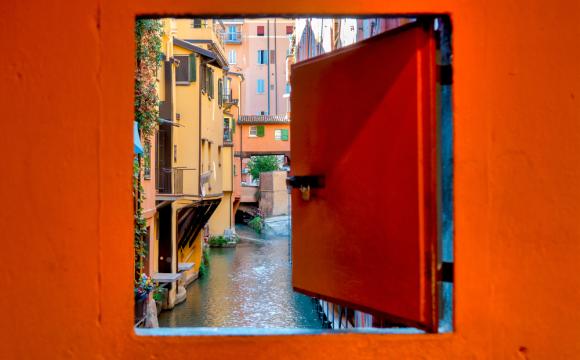Leonardo da Vinci, The Lady with the Ermine (presumed to be Cecilia Gallerani) 1489-90, oil on panel, Czartoryski Museum, Kraków, Poland
In 1482, Leonardo da Vinci left his hometown of Florence for a new opportunity. He had managed to gain employment at the court of Milan, where Ludovico Sforza “Il Moro” reigned as the de facto duke. There, Leonardo painted one of his most remarkable portraits, a likeness of a teenaged girl named Cecilia Gallerani, who was Ludovico’s favorite mistress.
Although Leonardo da Vinci seems to have intended to work as a military engineer in Milan, none of the many military contraptions that Leonardo da Vinci sketched for Ludovico Il Moro seems to have been realized. When he began preparing sketches of Cecilia Gallerani inside the private chambers of the Castello Sforzesco, Leonardo da Vinci was trying to ensure his own place in the ducal palace by painting his most ambitious portrait to date.
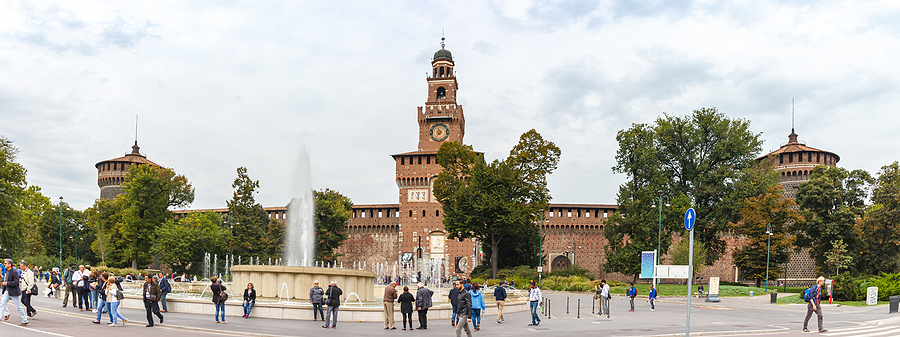
Shortly after completing Cecilia Gallerani’s portrait, Leonardo would go on to paint his famous Last Supper in the refectory of Santa Maria delle Grazie in Milan, under Ludovico’s patronage. Leonardo’s artistic success in the service of the court of Milan ultimately allowed the artist to return home to Florence with a new reputation as a world-class Renaissance man.
Who is that lady?
After spending many months researching Cecilia Gallerani and the circumstances of this portrait’s creation, I believe that Cecilia must have been a naïve yet tough young woman who had to fight to keep her place in the palace--and against those who wanted her out. Leonardo—a much older fellow Florentine more experienced with court intrigues—may have provided Cecilia with a few tools to navigate tricky situations inside the Milanese court.
Cecilia Gallerani, then about 16 years old, could have no idea how famous she would become. Cecilia originally came from a large Sienese family; her father worked as a petty diplomat at the Milanese court. Cecilia’s family was busy shuttling her off to a Milanese convent when somehow, she caught the eye of Ludovico Sforza. He holed Cecilia up behind the fortified walls of the Castello Sforzesco instead.
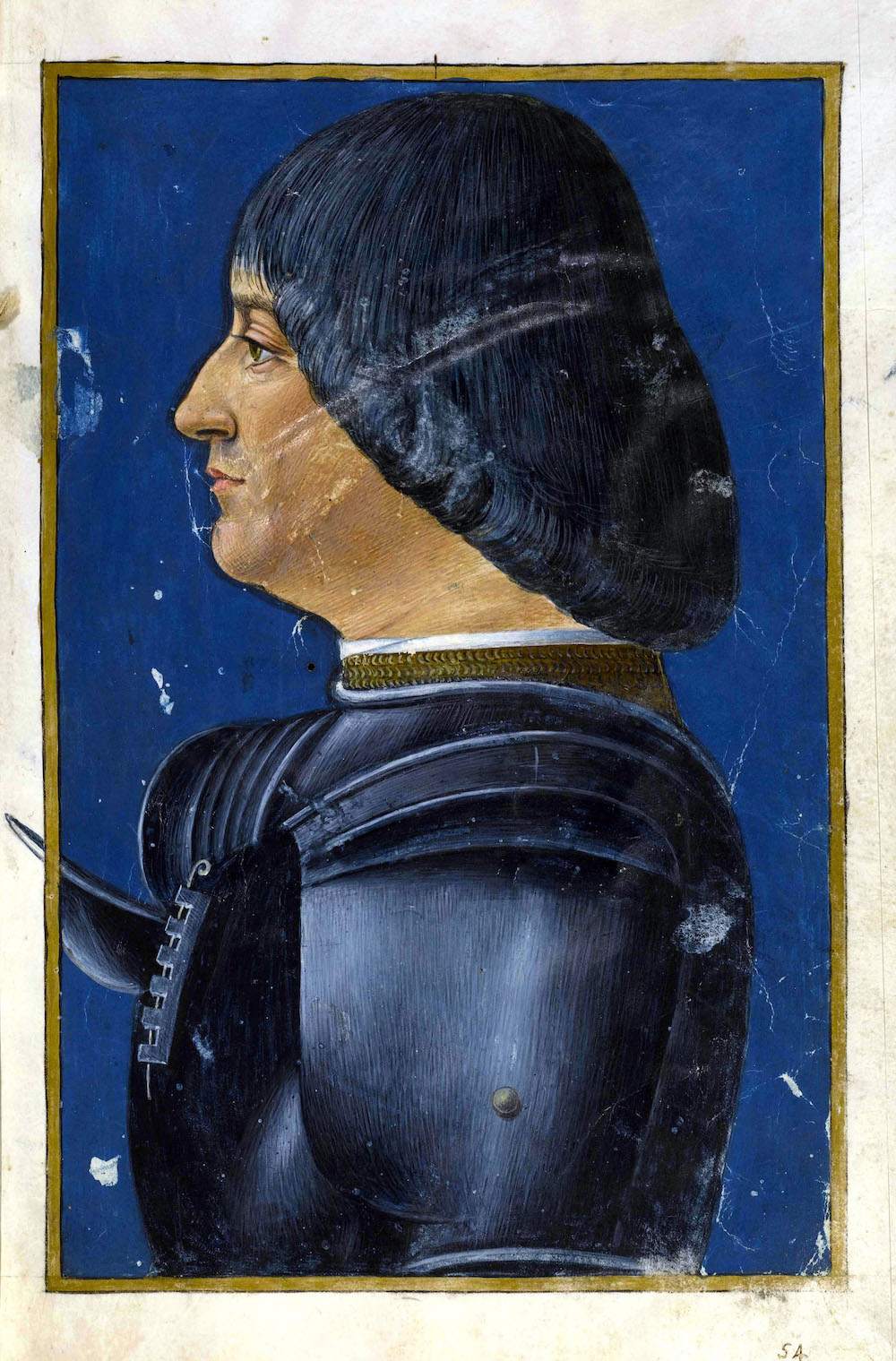
When Leonardo da Vinci began to capture Cecilia’s lively presence in paint, Ludovico was set to marry Beatrice d’Este, the daughter of the Duke of Ferrara. According to legend, Ludovico postponed the marriage more than once, allegedly because he was in love with Cecilia. By the time Leonardo finished the portrait, Ludovico and Beatrice were married; Cecilia was pregnant. Needless to say, the situation in the castle was untenable.
After Ludovico’s marriage to Beatrice, Cecilia left the ducal palace. Eventually, she caught the attention of another Ludovico, Count Ludovico Carminati de Brambilla, known as "Il Bergamino.” The son she bore with Ludovico Il Moro, Cesare Sforza Visconti, was dedicated to monastic life and became abbot of the Church of San Nazaro Maggiore in Milan. Cecilia also bore four more children with the second Ludovico.
After Cecilia Gallerani exited the ducal palace, Ludovico Il Moro set his sights on Lucrezia Crivelli, who bore him a son. Lucrezia may have been the subject of Leonardo da Vinci’s beautiful portrait called La Belle Ferronière, though the sitter’s identity is debated. However, the duke’s string of power plays and amorous pursuits was cut short. After bearing him two sons, his wife, Beatrice d’Este, died in childbirth at age twenty-one. Ludovico was soon overcome by the forces of Louis XII, who invaded Milan in 1499. He died as a prisoner of the French king in a dungeon at Loches Castle in 1508.
Cecilia’s story had a happier ending. She presided over one of the most celebrated courts of northern Italy, drawing artists, writers, nobles, and politicians from across Europe. Cecilia Gallerani became an esteemed author, musician, and patron of the arts. She lived to an old age and even befriended Beatrice’s older sister Isabella d’Este, one of the most influential women of the Italian Renaissance.
About the portrait
Cecilia’s bright, alert expression gives us the illusion of immediacy. It feels as if Cecilia’s attention has just been captured by something outside the frame of the painting, like a bird fluttering on the windowsill or someone appearing at the door. In stark contrast to the static profile portraits that were the norm at the time, Cecilia turns with a dynamic sense of liveliness. Originally, the background probably consisted of an atmospheric landscape similar to the one we see in Leonardo’s famous Mona Lisa; the background of Cecilia’s portrait was overpainted at some point before the nineteenth century.
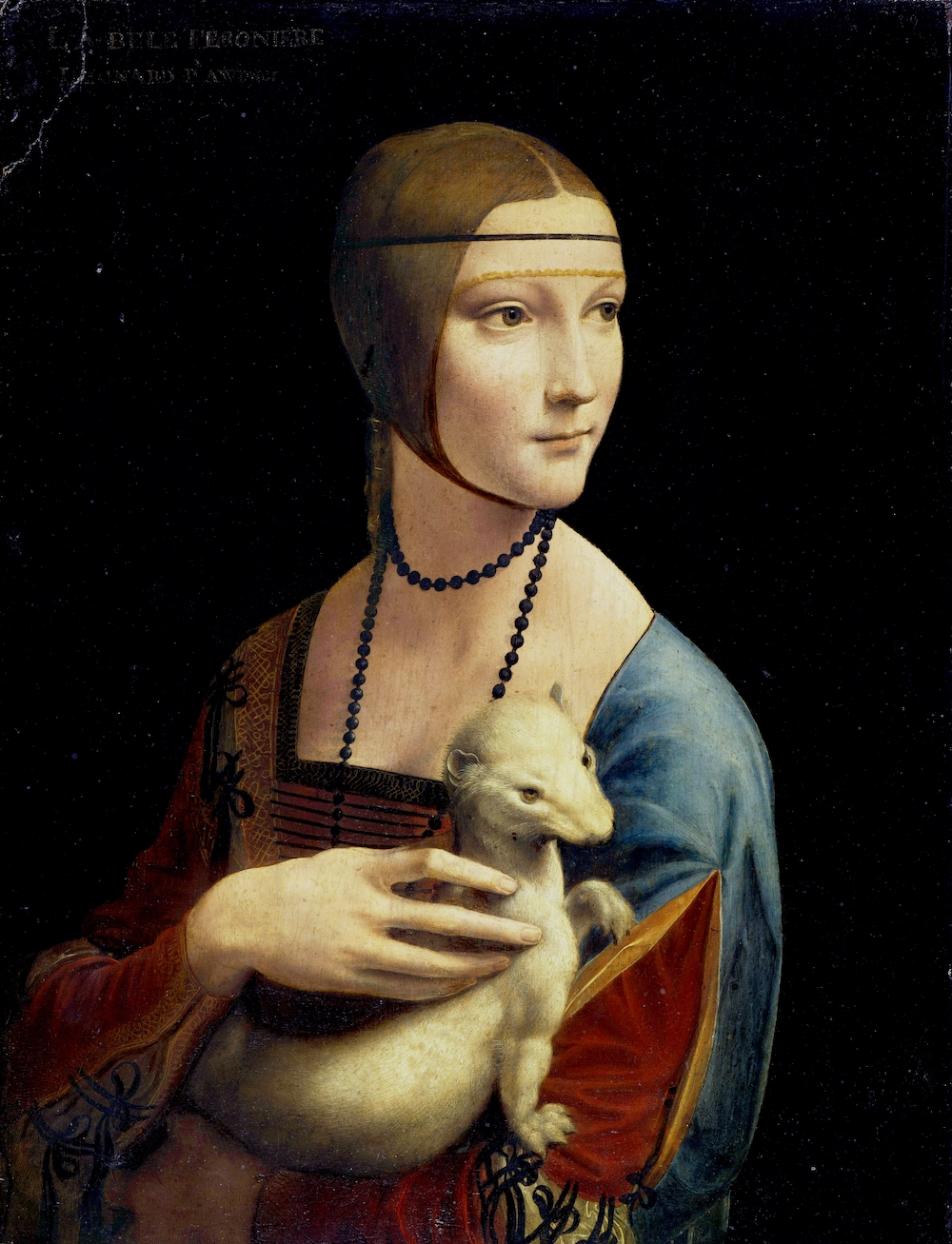
Like Leonardo’s beautiful portrait of Ginevra de Benci, Cecilia’s likeness presents us with a combination of realism and allegory. The white ermine in her lap has formed the subject of much speculation. The ermine may be a play on Cecilia’s surname, which sounds similar to the Greek word for ermine. Traditionally, the white ermine was a symbol of purity; according to legend, it would rather die than soil its fur. In 1488, Ludovico also entered the chivalric Order of the Ermine, so it may have been a reference to Ludovico’s patronage and connection to Cecilia.
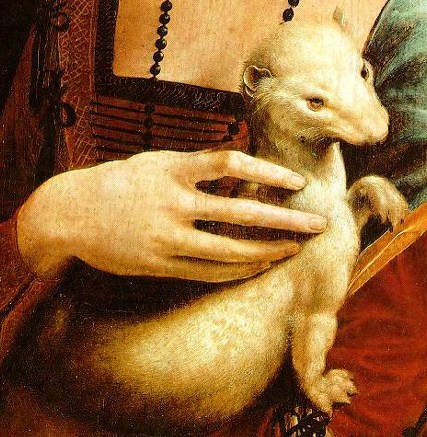
When Cecilia left the Castello Sforzesco and Ludovico Il Moro behind, it seems that she took Leonardo’s portrait with her. The picture passed through Cecilia’s heirs until it landed in the collection of a noble Polish family who traveled widely in Italy through the 1700s. The Czartoryski family carefully protected the picture, moving and hiding it during the instability of Russian threats of the nineteenth century--and then again during World War I.
But in 1939, the story of Cecilia’s portrait would take a dramatic—and dangerous—turn.
The Lady’s theft and recovery during WWII
Incredibly, the Lady with the Ermine became the object of desire of another powerful tyrant in the twentieth century. Hans Frank, who ultimately became the Nazi governor of Poland, set the portrait in his sights upon the German invasion of Poland in the autumn of 1939. By the end of World War II, the Nazis had either stolen or tried to steal every known painting by Leonardo da Vinci. The Lady with the Ermine was at the top of their list.
After Nazi soldiers located the picture hidden inside a walled-up compartment in one of the Czartoryski family’s country estates, the portrait soon became a pawn in an epic power struggle among several high-ranking Nazi officers. Between 1939 and 1945, the Lady traveled back and forth multiple times between Poland and Germany. It’s a wonder it survived at all.
When the Allies located Hans Frank at his Bavarian lakeside villa in May 1945, da Vinci’s Lady with the Ermine was among a handful of remaining masterpieces in Frank’s personal possession. During the Nuremberg Trials, Frank pled that he had done everything in his power to safeguard the art treasures.
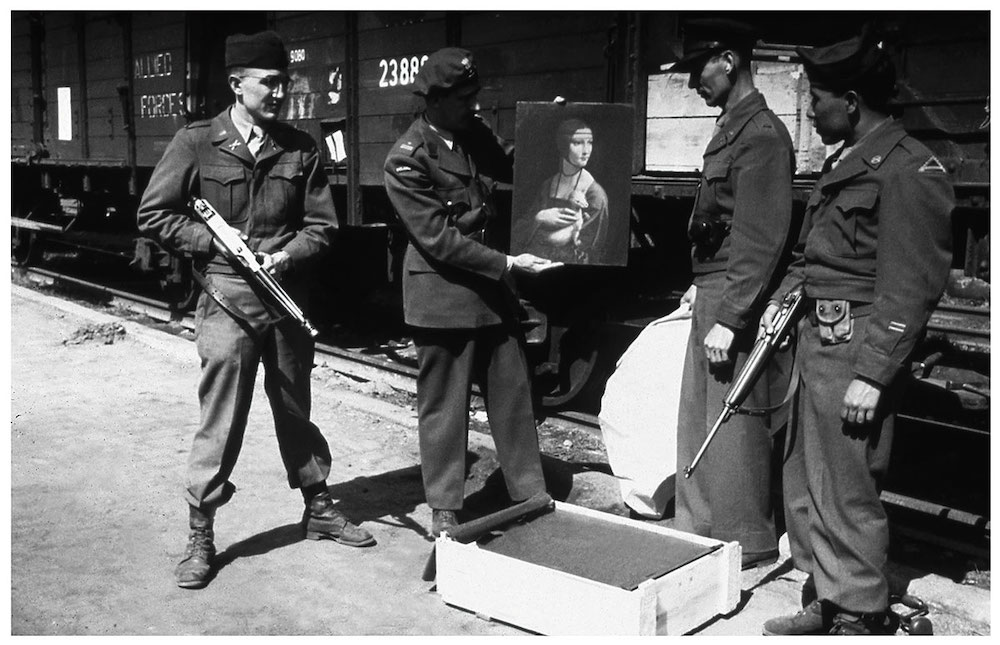
At the same time, he was labeled “the butcher of Poland,” and was held in part responsible for the death of the staggering sum of six million innocent Polish people. Thanks to the efforts of the Allied Monuments, Fine Arts, and Archives Program (the so-called Monuments Men) to save important European monuments and works of art, this picture was saved, restored, and returned.
Leonardo da Vinci’s portrait of Cecilia Gallerani returned to Poland after World War II, and was held under Communist rule in the collection of the Czartoryski Museum. In 1991, the painting was officially returned to the ownership of the Czartoryski family. It traveled extensively to exhibitions across Europe and America for the next two decades. In 2017, it was put on public display at the National Museum of Kraków, where it now inspires visitors from around the world.
Laura Morelli is an art historian and historical novelist with a passion for Italy. You can find much more about what to bring home from Italy in her guidebook series, including Made in Florence and Made in Italy. These books, along with Laura’s Venice-inspired historical novels, including The Gondola Maker, are available in the Italy Magazine shop. Her new novel, The Night Portrait—a dual-timeline story based on Leonardo’s Lady with the Ermine—is out now.
